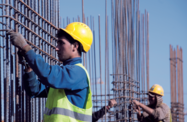Morocco: Housing demand stimulates growth
 En Français
En Français
The real estate sector, long a significant source of inbound foreign capital, has undergone a structural shift in recent years. Prior to the global economic crisis in 2008, many of the sector’s marquee projects consisted of high-end and luxury tourism, residential and mixed-use developments. However, as demand in that segment has slowed, a new push in social and mid-range housing has helped to spur activity, boost production of building materials, particularly cement, and stimulate consumer lending.
Sector FDI grew by 12.8% year-on-year to reach Dh8.2bn (€734m) in 2011, but dropped to Dh1.4bn (€125.4m) in the first quarter of 2012 from Dh2.1bn (€188m) the previous year, according to the Ministre de l'Habitat, de l'Urbanisme et de la Politique de la Ville (Ministry of Housing, Spatial Planning and Urban Policy, MHUP). Local media reports place real estate FDI in the first nine months of the year 18% lower than in 2011, although domestic spending has helped to maintain activity.
Many of the current building efforts are motivated by the government’s commitment to reduce the housing deficit, which was estimated at 840,000 units at the beginning of 2012. The MHUP aims to halve this number by 2016 and has announced plans to construct 150,000 new social housing units each year between 2012 and 2020 to meet demand and avoid social unrest similar to Arab Spring-related protests in neighbouring countries.
In the first half of 2012 the number of housing units produced reached 66,195, of which 48,286 were social housing units, according to MHUP figures. This represents a 16.6% increase from the 41,423 social housing units constructed in the first half of 2011. However, it means another 101,714 units needed to have been built in the second half of the year to meet the 150,000-unit target.
In the 2010 Finance Law, the state introduced a set of fiscal incentives for affordable housing developers, including exemption from corporate taxes, land registration fees, cement taxes and value-added tax. These incentives were set to expire at year-end 2012, but were renewed under the proposed 2013 Finance Law to continue stimulating growth in this key segment.
In addition, restrictions on the type of projects that are eligible for these subsidies have been loosened in recent years, opening up the playing field to a broader number of construction companies, including more small and medium-sized enterprises (SMEs).
Morocco’s mid-range housing segment also presents considerable opportunities for growth. A growing middle class has created more demand, which has supported the housing markets in Rabat and Casablanca, where prices have remained stable since 2008.
In addition to tax exemptions like those applied to social housing projects, the state will also offer subsidies for homebuyers such as exoneration from registration fees for ownership titles. Mid-range housing is classified as units between 100 and 150 sq metres with a sale price not exceeding Dh5000 (€447) per square metre.
A lack of available urban space is a constraint for middle-class housing programmes, however. As a result, the state plans to develop 11 new cities on the outskirts of existing hubs nationwide. Work has already been launched on the cities of Tamansourt, Tamesna, Lakhyayata, Chrafate, Zenata and Tagadirt. According to figures included in the 2013 Finance Law, more than 76,000 housing units will be made available in the first stage.
Although FDI has dipped in recent years, Morocco’s real estate sector has shifted to take advantage of growth potential. Wider economic expansion, for example, has seen more home-grown demand for real estate. “For the high-end segment, what makes a difference is that in the last decade GDP has grown by 50-60%, from which the middle class has benefitted,” Jaway Ziyad, director-general of Prestigia/Addoha, a luxury property developer, told OBG.
However, the sector continues to be restrained by a national liquidity shortage. Figures from the Bank Al Maghrib, the central bank, show that lending to homebuyers and companies increased at its slowest pace in a decade from January through November 2012. Conversely, bank loans extended to hotel developers has increased almost sixfold since 2007, suggesting the possibility that growing lending in the tourism sector could be hurting real estate developers’ chances of obtaining a loan.



